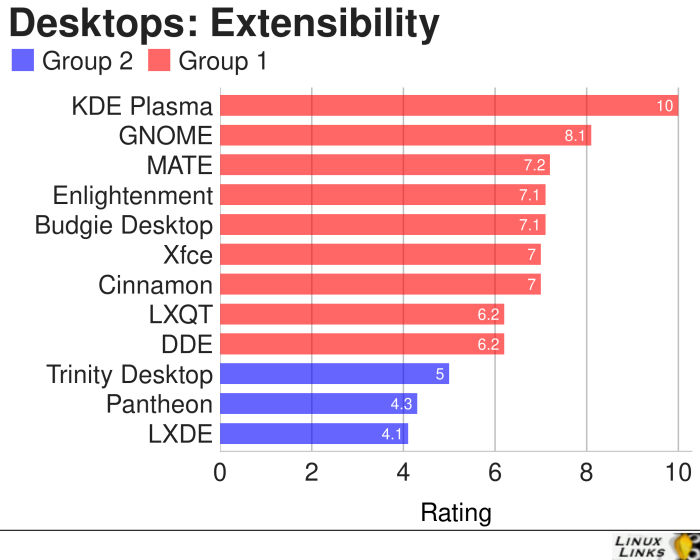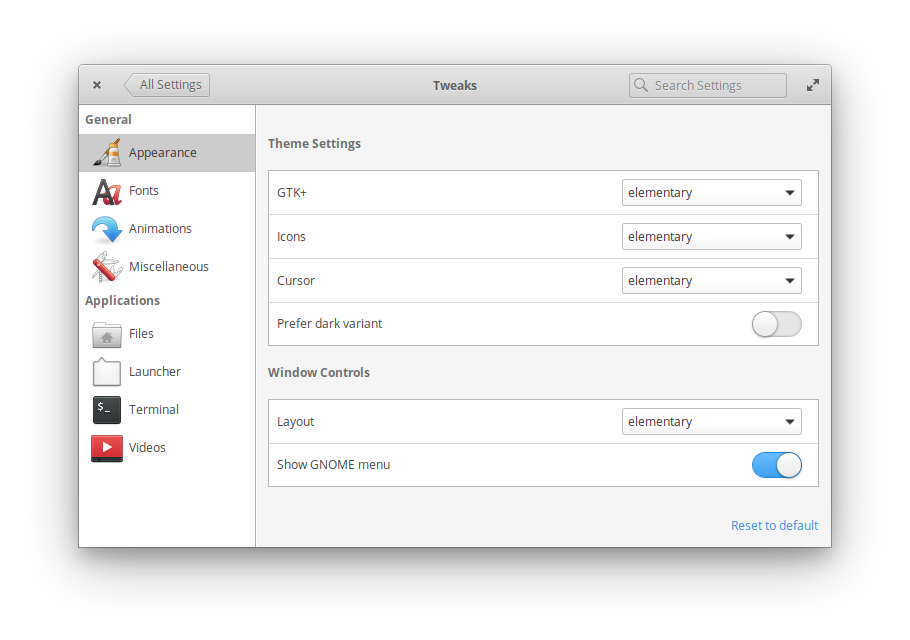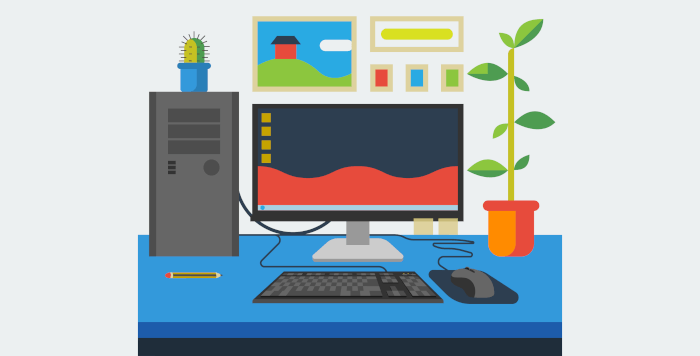Last Updated on May 27, 2022
Extensibility
Extensibility relates to the ability to customize the DE to an individual’s preferences and tastes. This flexibility is offered by themes, extensions, and applets.
Freedom of choice is a central plank of open source software, and it’s very relevant when choosing a desktop environment. One of Linux’s best features is its modularity. Different components of a Linux system originate from different developers; each has their own specific design goals and focus on those goals. Major parts of the system are built up from smaller components that can be taken out or replaced, which is one of the reasons that has fueled the growth of the number of Linux distributions.

As Pantheon doesn’t tender out-of-the-box customization options, you’ll want to install the Elementary Tweaks tool even though elementary’s development team actively discourages its use. Tweaks is a system settings panel that lets you easily and safely customise your desktop’s appearance. There’s quite a few tweaks I regard as essential such as showing the category view by default. But even with Tweaks, you’ll have to get under the bonnet (dconf) to customize many of the components.

There are some third-party themes and icons to customize the environment.
TDE lets you customize its behavior, including TDE, UNIX, Wndows and macOS styles. There’s the option to enable accessibility related keyboard gestures. You can turn off/on special effects including smoothed fonts, fading menus, fading tooltips, displaying contents in moving/resizing windows, previews in the file manager, and animated menus. There’s pre-installed themes, together with a good range available to download.
LXDE offers the usual extensible panel, rubbish bin, and wallpaper. There’s a typical category/cascading menu although there’s no search functionality here. There’s also application launchers. LXDE offers a component-based design. It offers limited customization options by right-clicking on the desktop and choosing Desktop Preferences. You can create new panels, add and remove panel items. There’s a CPU usage monitor, volume slider, ClipIt (a lightweight GTK+ clipboard manager). The desktop is easy to use. Adding an application shortcut to the desktop is as simple as finding the software in the LXDE Menu, right-clicking, and selecting Add to Desktop.
LXDE doesn’t make use of GTK3 (the newest version of the GTK toolkit), so users are stuck with using the old GTK2 themes. But there are dozens of great GTK2 themes for the LXDE desktop.
Next page: Page 5 – Documentation & Support
Pages in this survey:
Page 1 – Features
Page 2 – User Experience
Page 3 – System Resources
Page 4 – Extensibility
Page 5 – Documentation & Support
Page 6 – Development / Closing Thoughts
Learn more about the features offered by each desktop environment. We’ve compiled a dedicated page for each desktop environment explaining, in detail, the features each offers together with screenshots.
| Desktop Environments | |
|---|---|
| Pantheon | Showcasing the elementary OS |
| LXDE | Desktop environment with low resource requirement |
| Trinity Desktop | Qt3-based KDE 3.x form traditional computer desktop that is responsive |

I consider myself to be a power-user and use openSuse Leap 42.3 on my main workstation (HP xw8400) and prefer KDE Plasma for it’s configurability.
For my various laptop/netbook devices I settled on Lubuntu a couple of years ago because LXDE seemed to be lighter and faster than Xubuntu’s XFCE. Lubuntu 18.04 runs pretty much the same on my Acer One 110 Netbook, a Dell Inspiron 1300 and even a 12 year old Apple 13″ MacBook. That means I only need to keep up with 2 desktop environments. The one thing it lacks is a proper 2 panel file manager. I use Konqueror on openSuse which is IMHO the very best file manager around.
I agree with your view of LXDE, and would definitely recommend it, especially for older equipment and for Linux newbies.
As to TDE I only have one comment. It was designed for those who couldn’t drag themselves away from KDE 3.5! So obviously it has a more old fashioned look and feel. I did try it for a while as I needed Quanta+ for webdesign, but that now works fine on KDE 4.x so I left it behind.
Thanks for these interesting and informative reviews.
though LXDE is pretty much dead, I still enjoy the days when I ran LXLE as my main distro…
This comment was removed because it broke the rules. We don’t allow external links in comments. Explain.
To suggest an open source program, please complete this form.